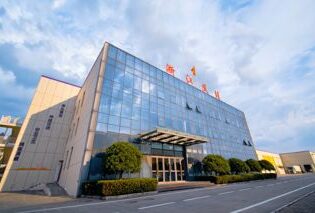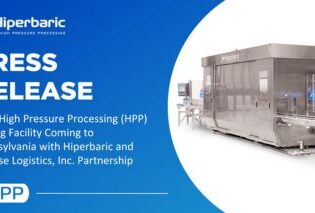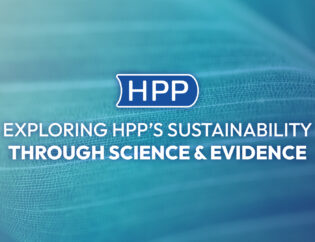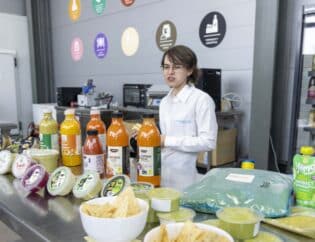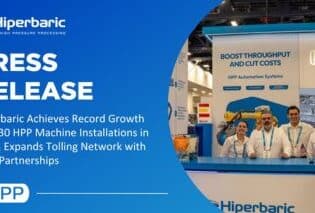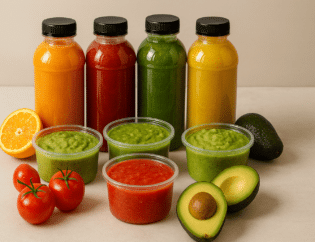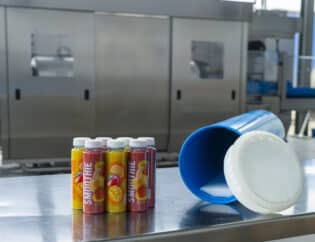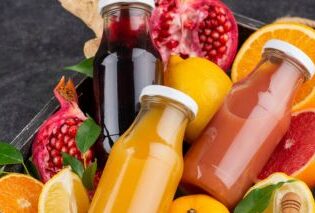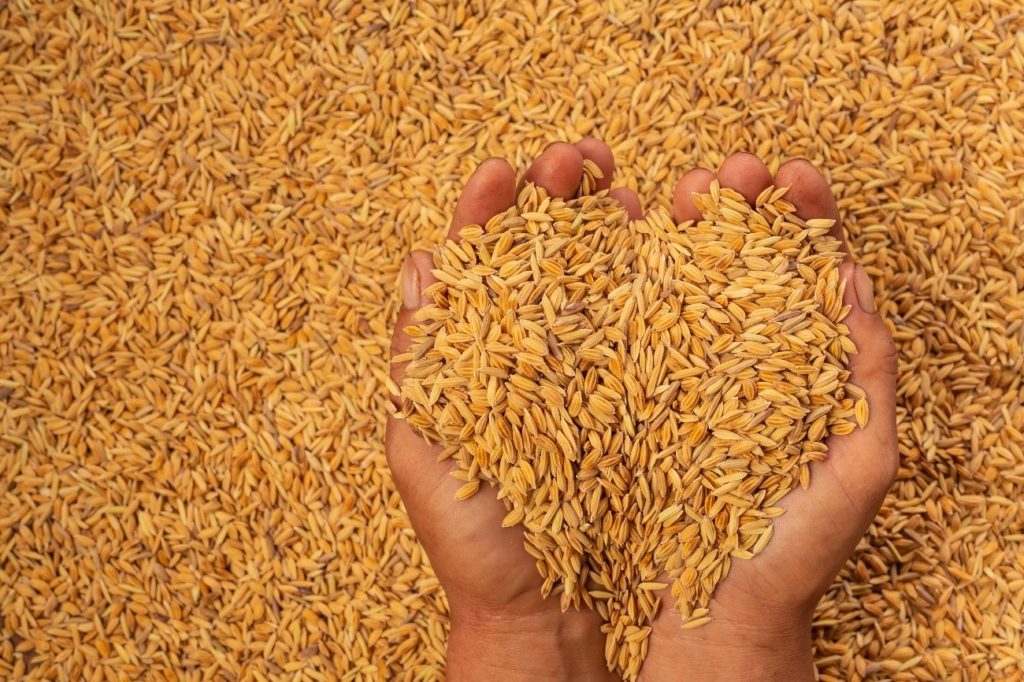
The current Coronavirus pandemic has brought economies on their knees worldwide and highlighted weaknesses of our economic and social model that go unnoticed on normal situations. One of the most critical concerns arisen from this situation is how to guarantee Food Security when global logistic chains face severe disruptions. In such cases, extending the self-lives and ensuring the quality are keys for Food Security, discover how HPP can help.
Food Security
You may be familiar with the term Food Safety, which could be defined as “handling, preparing and storing food in a way to best reduce the risk individuals becoming sick from foodborne illnesses” (Source: Australian Institute of Food Safety); however Food Security, although related, is a complete different thing.
The United Nations’ Committee on World Food Security defines “Food Security is defined as when that all people, at all times, have physical, social, and economic access to sufficient, safe, and nutritious food that meets their food preferences and dietary needs for an active and healthy life” (Source: International Food Policy Research Institute, IFPRI).
Food Security has been in the raise over the decades thanks to the substantial developments made in countries such as Zimbabwe, Indonesia, or India (2019 Global Hunger Index – The Challenge of Hunger and Climate Change) through international and national programs, infrastructure development and adoption of technologies.
However, the Cov-19 pandemic could put an end to this and lead to a massive fall of Global Food Security. Epidemic can severely damage food chains, especially since agricultural regions have become poorer and less populated as part of the migration of the rural populations to the cities. According to the United Nations, 55% of the world’s population lives in urban areas, a number that is expected to increase to 68% by 2050.
On one side, this demographic changes concentrated most of the world population far away from food production sites and heavily dependent on logistic chains to bring food to the table while on the other it lead to an increase of average age on rural areas accompanied of a drop of public budgets, making the populations producing the food more sensible to crisis such as epidemics.
Cov19 and Food Security
The most affected in this pandemic will be the poorest economies such as India, were most of the population depends on daily vendors and wet markets to access food and logistic chains are still up to the monumental task of feeding 1,3 Billion people. The total of people living below the line of extreme poverty is expected to raise globally by 20% but it will also affect developed countries which Food Chains are more depending on exports than most citizens initially realize.
As an example, let´s take Chinese Pork Industry. In China, African Swine Fever Virus Epidemic has ravaged Chinese pig farming industry in 2019, killing 100 Million pigs which account to 1/3 of the total pigs in the country, which also happens to be the largest market for pig meat. This has led to an increase of around 40% of the price of pig meat, which is the main meat source for most of the population and an increase of the imports to up to 951,000 tonnes during the first quarter of 2020, nearly doubling 2019´s volumes.
The main supplier for this meat was Spain, which has become the largest exporter of pig meat in terms of total value of the exports at a great extend thanks to China´s imports. Soy coming from Argentina is an important part of those pigs diet, hence as logistic chains are disrupted by the current pandemic, we´ll see a significant raise of the prices.
A different story is happening with avocados, whose prices are peaking since producers in Mexico (the largest exporter of the green gold) have reduced cultivation as they expected the epidemic to reduce the consumption, which isn´t happening so far, leading to an increase on the prices in the US.
When securing the Food Security on the short term, international agreements and diplomacy are key to ensure food security and National leaders must seek help from their counterparts and collaborate.
In the long term, lessons should be taken from this incident and countries should look at a way to increase their food stocks and become less dependent on imports. Although the second is difficult to achieve in some cases such as United Arab Emirates or Singapore where, due to climatology and surface respectively, almost no food can be produced, the first can be solved through planning and new technologies.
The role of Food Technology on Security
As mentioned at the beginning of this article, Food Security Insurance consist in guaranteeing that all people, at all times, have physical, social, and economic access to sufficient, safe, and nutritious food that meets their food preferences and dietary needs for an active and healthy life.
To guarantee the access to sufficient food, extended shelf lives are required whether to store enough food during periods when it cannot be produced whether to procure it from other locations.
The very first tool used by mankind to achieve this was to control water content in food. From the first agricultural revolution, dry grains were stored in silo with controlled ambient to ensure the availability food throughout the year regardless of the seasons.

Many animal and vegetable products were dried and/or smoked to reduce water content and water activity before storing in dry ambiences. This is the origin of most meat products such as Prosciutto, Sausages, Cheese, etc.
Of course many of this processes involved also fermentation, which was also a powerful tool from the dawn of times to make food available in times of hardship but since its purpose is also to modify the product, it could be argued its consideration as a preservation technology.
However dried goods are not enough to cover our dietary needs, so further developments were made. During the tumultuous XVIII century, Napoleon needed to feed its armies during campaigns across Europe, for which he required extended shelf lives. As First-Consul of France, he offered a prize of 12,000 Francs (back then, a real fortune) for a new method to preserve food. Amongst others, the inventor Nicolas Appert, known as the “father of canning”, presented in 1806 a process to extend shelf lives of fruits and vegetables by placing them in glass containers, closed by a cork and wire and then sealed with wax that were placed on boiling water for a determined amount of time. Although he didn´t won the price, he was later given the prize amount as an ex gratia in 1810 in exchange of making the process public.
This discovery was later used by Pasteur for his research and one of his fellow researchers, Charles Chamberland invented the autoclave back in 1884. With the development of industrial canning systems that allowed to pack food in cans that were then sterilized in autoclave, food could be stored for long period of time in ambient which was a major contribution to Food Security and Mankind itself.
However fresh foods are an essential part of the diet, not in vain, we´ve all heard about stories of scurvy episodes in old-times sailors related to the lack of vitamin C from fresh fruit and vegetables.
The lack of fresh foods (notably Fruits and Vegetables) is linked to poor health and increased risk of non-communicable diseases (NCDs). The World Health Organization (WHO) suggests consuming more than 400 grams of fruits and vegetables per day to improve overall health and reduce the risk of certain NCDs. Only in 2017, the WHO estimated 3.9 million deaths worldwide were attributable to inadequate fruit and vegetable consumption.7
At the same time that canning and retort industrial equipment were being developed, refrigeration technologies were being developed and in 1881, the British entrepreneur William Soltau Davidson who had emigrated to New Zealand, equipped a ship named the Dunedin with a cooling system. The Dunedin sailed from Port Chalmers (New Zealand) in 1882 for London with what was to be the first commercially successful refrigerated shipping voyage, and the foundation of the refrigerated meat industry.

The further development of chilled and frozen technologies, allowed storage and distribution of fresh/minimally processed foods across vast distances and periods of time, liberating mankind from the limitations of seasons and local climate.
The African Swine Fever Virus Epidemic in China is a practical example of freezing contributing to guarantee Food Security. The first step was to reinforce international agreements between Spain and China to ensure that Spanish companies could easily supply of sufficient, safe and nutritious pig meat to Chinese industry. Then, in order to be able to fulfill the tremendous scale of the demand, dozens of slaughterhouses and processing plants were built in Spain and Eastern Europe to process the pigs and new Freezing plants were built to freeze the meat and ship it frozen to China (and nearby countries which were traditionally supplied by China).
From a scientific perspective, reducing the temperature reduces microorganism’s metabolism in the case of freezing to a point near 0, thus extending shelf lives. As a rule of a thumb, the lower the temperature, the longer the shelf life.
Most regulations stablish temperatures for chilled storage between 0 to 4ºC, temperatures above that being considered temperature abuse for refrigerated foods and below -18ºC for frozen foods.
Unfortunately, although freezing temperatures held for a period of several days can even kill certain parasites such Anisakis, refrigeration technologies are bacteriostatic but not bactericide and cannot kill pathogenic bacteria.
To reduce the risk of food poisoning by Escherichia Coli O157:H7, Salmonella or Listeria among others and ensure food safety, preservation technologies are needed in addition to cold.
Concerning food safety, we should consider first of all to prevent the presence of armful microorganisms and substances in food through food hygiene and GMP and then to eliminate possible pathogens presence through preservation methods.
Those preservation methods have traditionally been thermal pasteurization methods such as the mentioned canning and retort or milder pasteurization processes, however the organoleptic and nutritional quality of the good is severely affected.
From an organoleptic property, this was balanced by adding additives to increase flavor and preservatives to reduce non-microbiological waste processes such as oxidation, a resource being more and more rejected by consumers.
HPP as a key tool for Security and Exports
The definition of Food Security specifies that the access to nutritious food is a third pillar along with quantity and safety. As mentioned above, fresh foods, notably fruits and vegetables are essential for human health, something consumers are aware of and that has driven the demand for minimally processed and fresher products up during the last decades.
But as consumers increasingly reject preservatives and additives in their products, the food industry struggles as the whole industry has been built around thermal methods and those require those additives to taste good enough for consumers.
This is why new non-thermal preservation technologies have been researched and developed in an attempt to conciliate both industry and consumer demands. Amongst them, High Pressure Processing (HPP) has been the most successful one since it can easily be applied to a vast variety of products from Juices to Ready-to-Eat Meals.
As a non-thermal pasteurization technique, HPP is able to kill pathogen microorganisms, ensuring safety of the food products processed, indeed ensuring Listeria absence on cooked and cured meat products was the application for which modern HPP systems were conceived following the 1998 Listeriosis Outbreak in the US. Back in 2001, Hiperbaric manufactured and installed the first HPP Industrial system for non-thermal pasteurization at Campofrío Food Group in Spain.
HPP also kills waste microorganisms, hence extends the shelf lives of products by threefold in most cases, although up to 20 times long shelf lives can be achieved in juices with low pH such as orange or lime juices.
As the process uses pressure instead of heat to kill microorganisms and temperatures remain below 45ºC, the modifications of the organoleptic quality of the product are minimal and often differences cannot be spotted between products before and after HPP (see below).
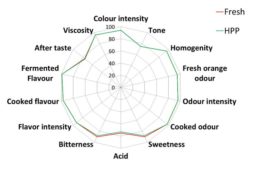
Although HPP systems are widely used worldwide to ensure the absence of pathogens and be the ultimate safety tool against Listeria, E.coli or Salmonella, most food companies look at pressure as a tool to extend shelf lives without compromising the quality of their product in the process.
This capacity of HPP to respect the properties of fresh products and freshly cooked products compared to the flattening caused by heat-pasteurized products has brought a lot of attention onto the technology in a time when food delivery services are booming. With a proper development and combination of technologies it can be used as a powerful tool for industrial kitchens looking forward to build stocks of semi-finished recipes to be easily reheated, plated and served.
This business model has been already explored and put in place by different companies across the world, however the most disruptives company to adopt HPP for restoration is Singapore´s famous The Soup Spoon, a restaurant chain built around the idea of bringing the world into a kitchen through delicious and comforting soups inspired by different gastronomies.
It´s founders, passionate of food and travelling, travel the world to acquire a unique understanding of gastronomies across the globe and translate their discoveries into new dishes. Among the brand´s top sellers we can find Chicken and Mushroom Ragout, the Velvet Mushroom Stroganoff or the overall topseller, the Hotpot Collagen Chicken Stock to enjoy a warm Hot Pot in the comfort of home.
The Soup Spoon used HPP to launch the same recipes they sell at their outlets in a 500g pouch format that is sold across supermarkets in Singapore. The recipes are exactly the same as the ones you can enjoy at their restaurants, except the versions you find in the supermarket last up to 150 days in the fridge thanks to the exceptional process developped by Anna Lim, The Soup Spoon´s Souperchef.
This also allowed to the Singaporean brand to expand their outlets overseas and launch 5 franchises in Taiwan back in 2019 which were very successful and led to plan more of franchises for this 2020. Thanks to HPP, all the restaurants in Taiwan are served from the central kitchen of the company in Singapore to ensure consistency and allow customers to enjoy the exact same tastes in Taiwan and Singapore.
This capacity to build stocks and operate from a single kitchen has allowed to The Soup Spoon to reduce the impact of Cov19 lockdown on their business and swift towards a strong delivery and online sales. The capacity to stock up is critical in the case of Singaporean companies as almost all the food in the city is imported from surrounding countries due to the lack of space for farming in the City-State.
However Food Security is about Nutritious food, and here is where HPP can provide an advantage compared to other technologies. Nutritional properties are almost not affected by pressure, specially antioxidants and bioactive compounds such as polyphenols or Citric Acid which consumption have been proven to be beneficial for different diseases and aging.
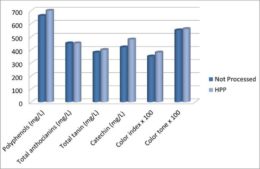
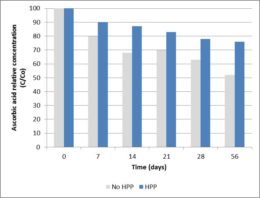
If you want to learn more about HPP technology and how to improve the food safety and quality of your products, do not hesitate to contact Hiperbaric, the world’s leading manufacturer of high pressure processing (HPP) equipment for the food industry.


